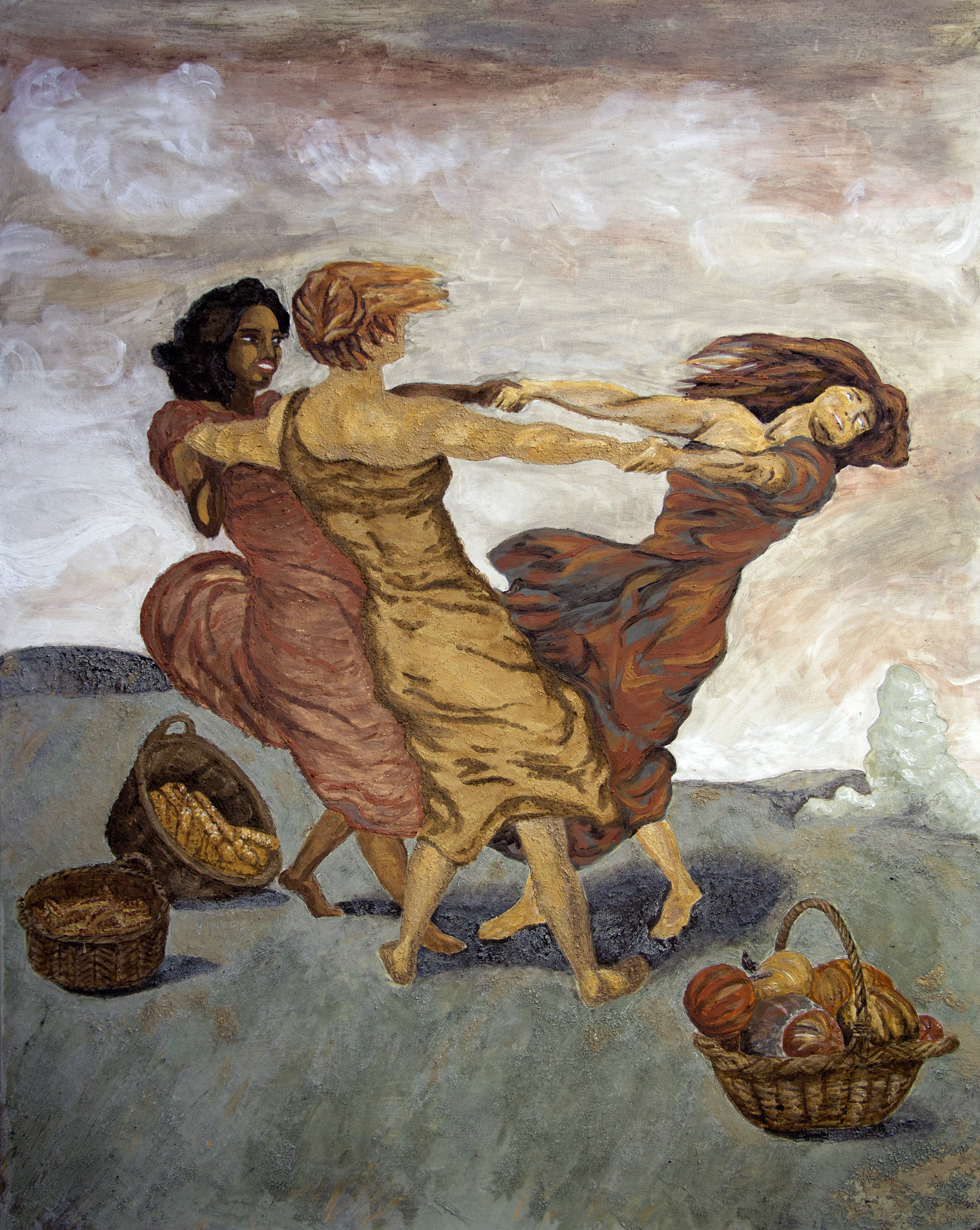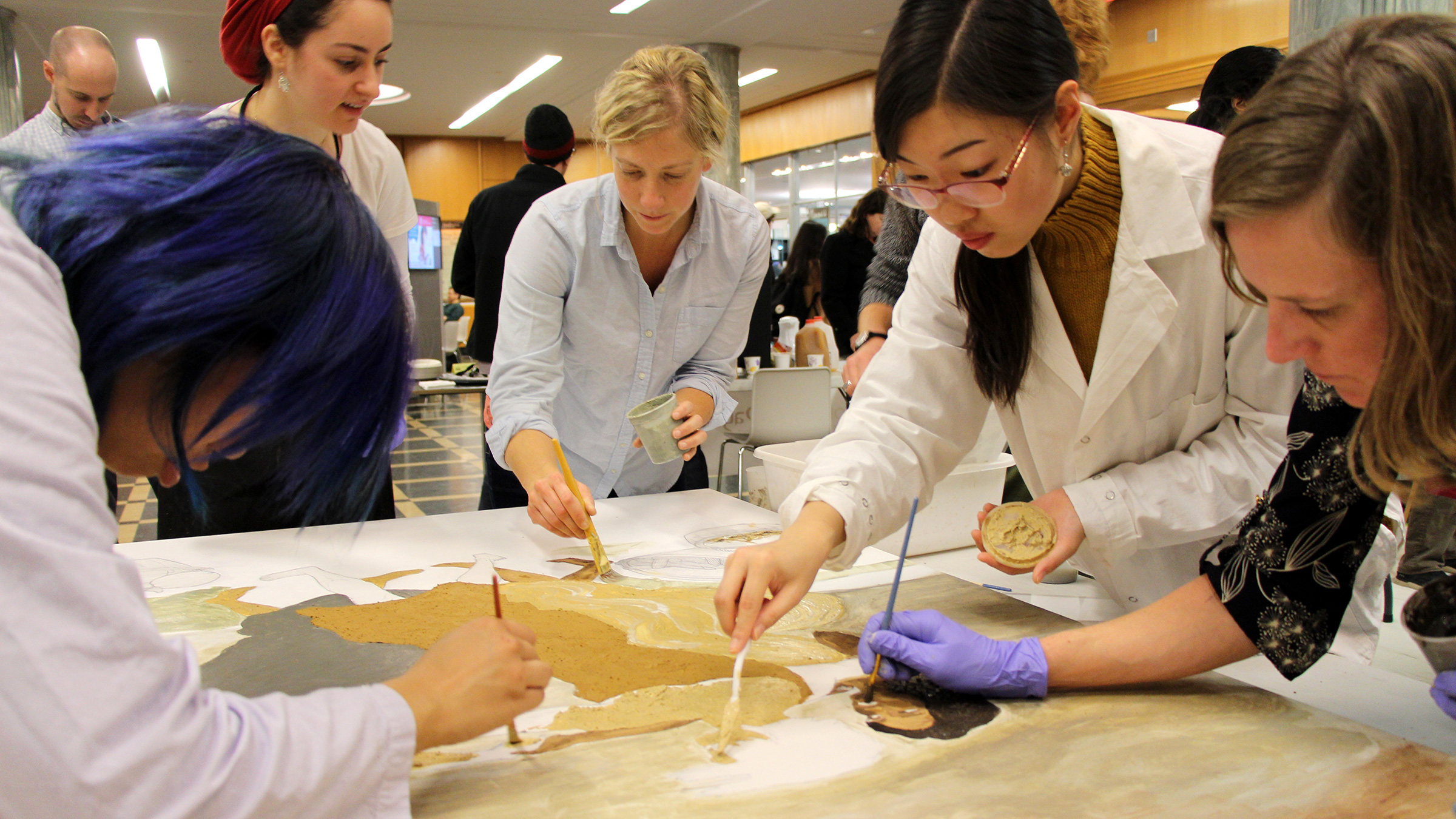
Soil, it turns out, can be a work of art — and a team of Cornell artists and scientists proved just that. A painting they created with soil captured first prize in the university division of the global soil painting competition sponsored by the Food and Agriculture Organization of the United Nations (FAO).
Kirsten Kurtz, manager of the Cornell Soil Health Lab and a graduate student in the field of natural resources, organized the public event Dec. 5, 2017 in the lobby of Mann Library as part of World Soil Day. There, supporting artists and members of the Cornell community created two large canvases from more than 50 paints formulated from soils from around the world.
“It’s amazing the range of colors you can get from soil,” says Kurtz, who started using the technique four years ago. “Of course you have the usual browns and tans, some tinged with yellow and red. But some yield pigments from jet black to light gray and even green.” In addition, soil particles in the paint from gritty sands to fine clays give the works a unique texture not possible with other media.

Her recipe includes pulverizing dried soil and mixing it with water and a gesso binder. Kurtz also led a similar event in 2015 that inspired FAO to take the idea worldwide.
On the main canvas, Kurtz and supporting artists affiliated with the School of Integrative Plant Science used soil paints to honor the Three Sisters of agriculture — corn, beans and squash — used by Native American communities. The scene they painted was based on Ringelreihen, a 1910 work by the German artist Franz von Stuck, which shows three women spinning arm-in-arm.
“We added three baskets filled with corn, beans and squash,” says Kurtz. “These are the crops used in the traditional ‘Three Sisters’ polyculture used by the Haudenosaunee here in the Finger Lakes for centuries, a technique that is a model of sustainable farming.”

Other members of the Cornell community tried their hand at soil painting on the second canvas, completing a mosaic-like design. Plans are to hang the works in the entrance of Bradfield Hall.
“My main goal for these events is to inspire people to think about soil,” says Kurtz. “It is as an essential natural resource – as important as clean water and air. We depend on healthy soil to provide us with food and fiber, and we can use soil to help fight climate change.
“We’ve got lots of great reasons to celebrate soil,” she adds.
See also:
- Global soil painting competition illustrates soil’s vital role [Cornell Chronicle 2017-11-28]
- Soil Painting (Cornell Soil Health website)
- Kirsten Kurtz’s gallery page


